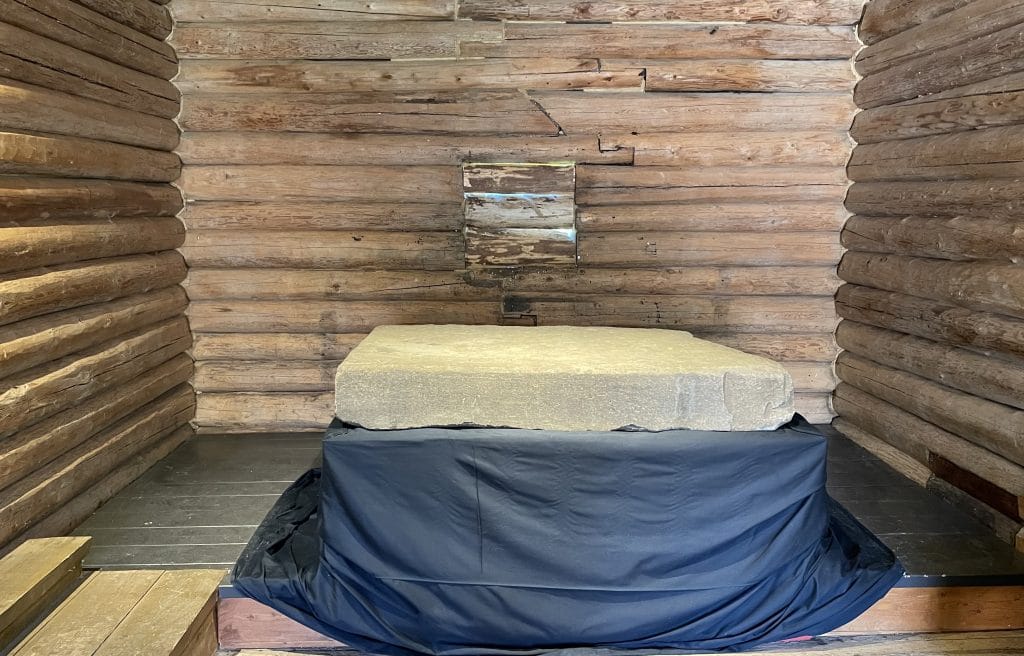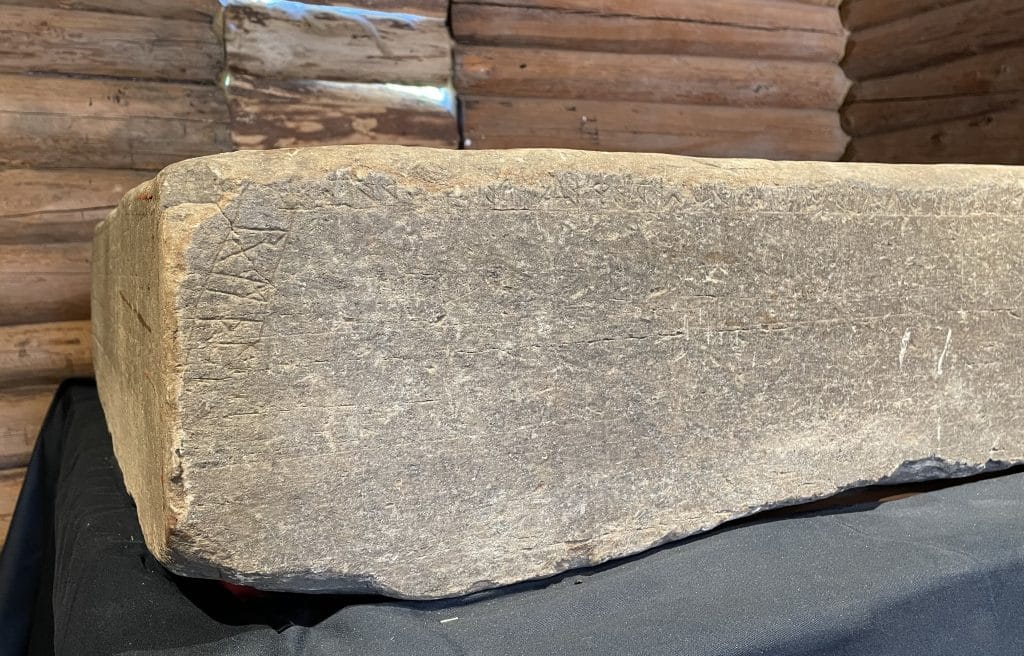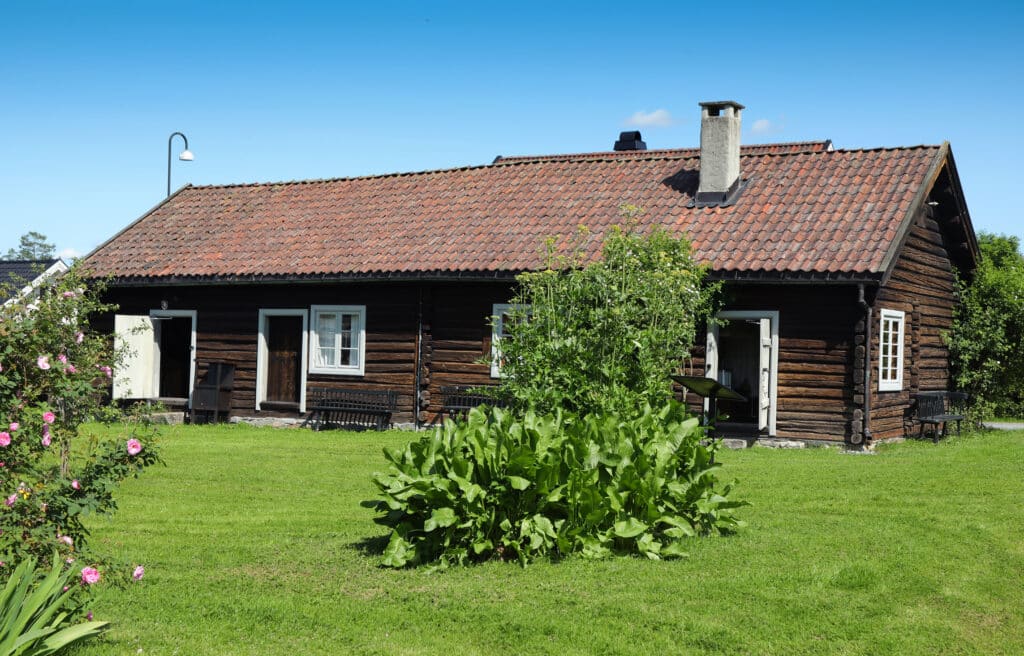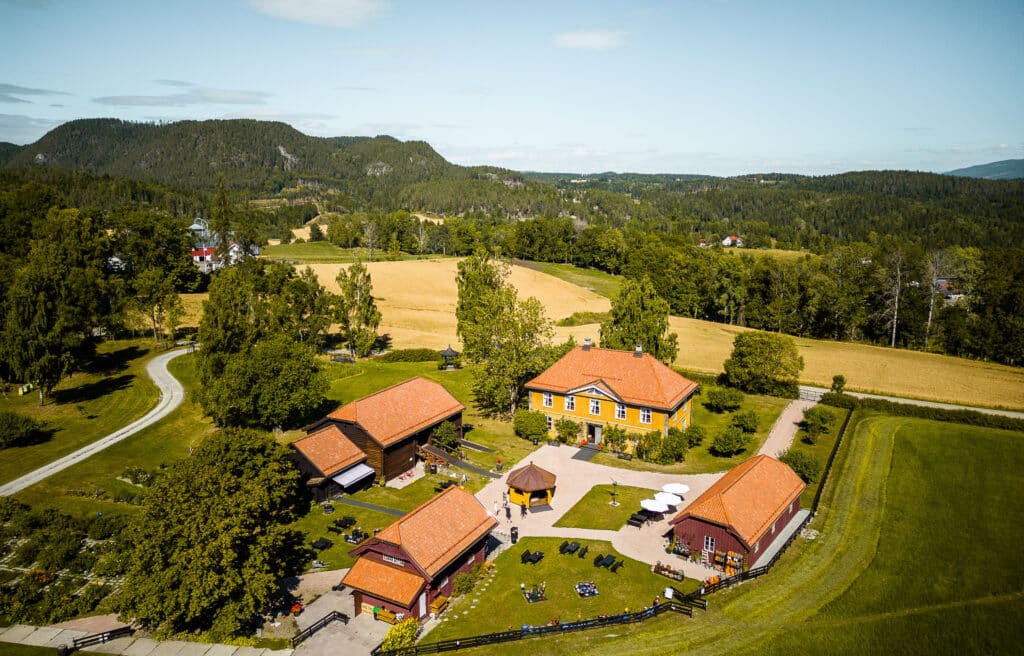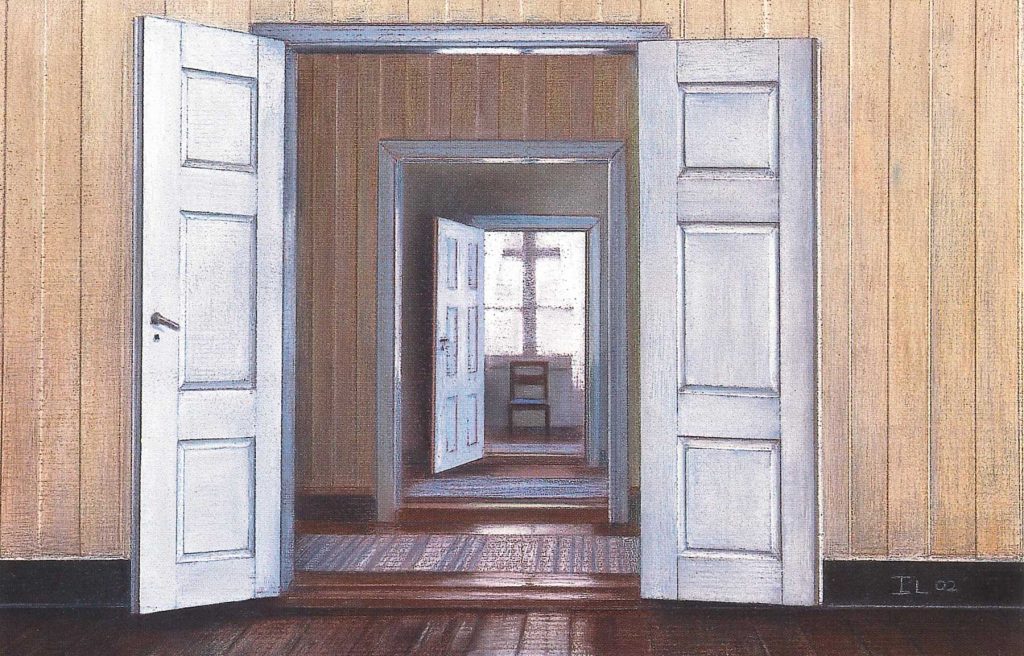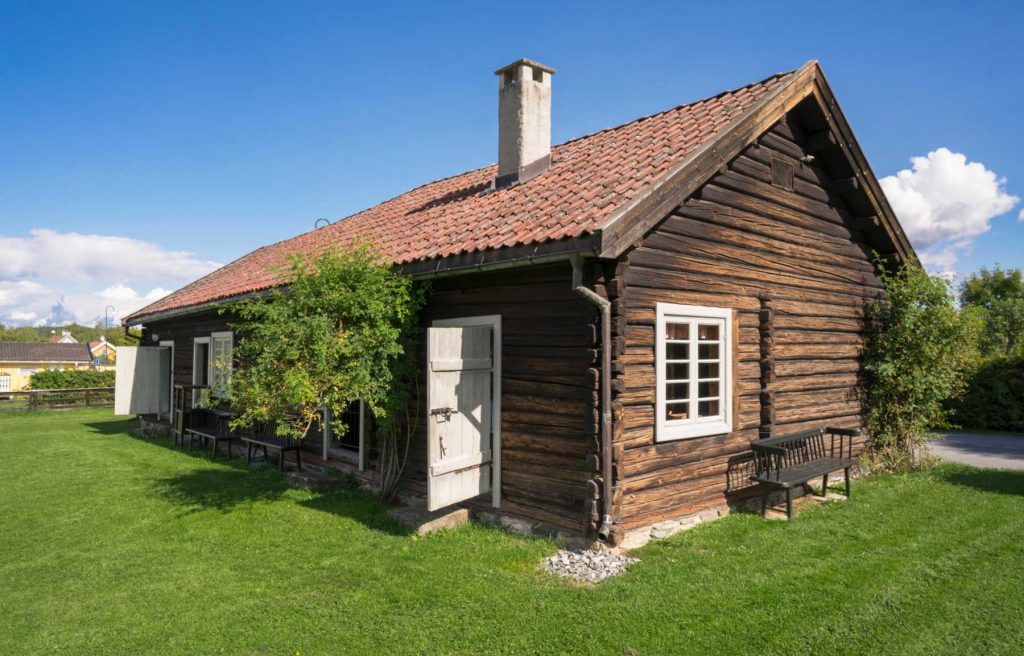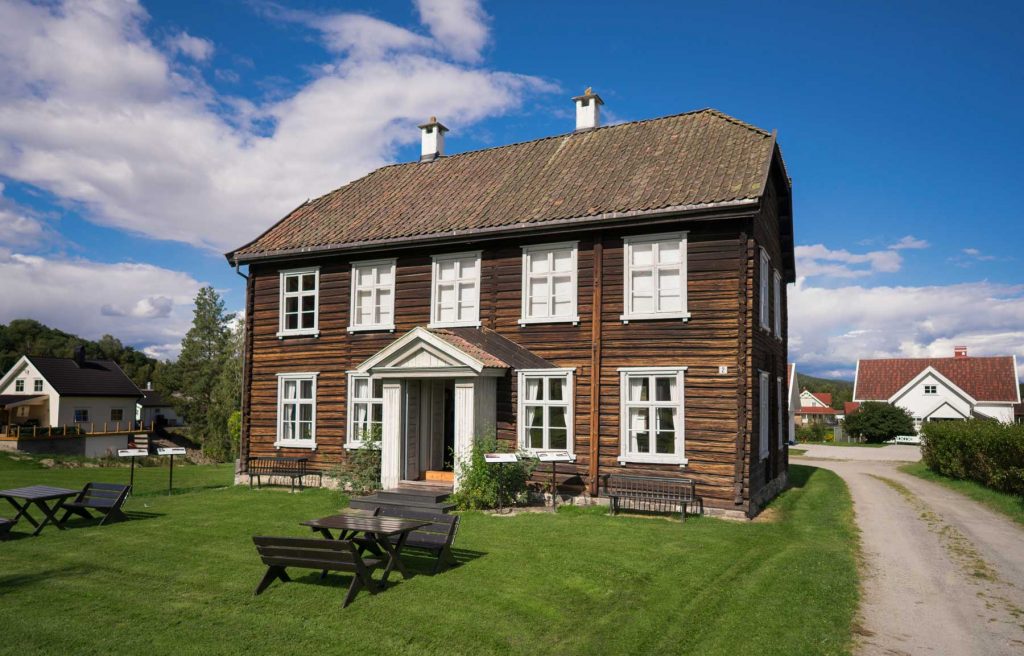2022 – Byesteinen fra Sigdal
I tømmerlåven viste vi i 2022 en unik runestein fra Nordre Bye gård i Sigdal, nå en del av samlingen til Kulturhistorisk Museum i Oslo. Byesteinen er sannsynligvis fra 3-500-tallet e.Kr., er 168 cm lang og veier ca. 900 kg. Den var brukt som dørhelle på Bye i flere generasjoner før det ble oppdaget at det dreide seg om en helt unik runestein. Daværende gårdseier kjørte den med hest og kjerre til Kristiania i 1866. Utstillingen ble laget i samarbeid med Vegard Bye.
Some background about The Bye Stone
In 1866, Peder Hansen Bye, a farmer in Sigdal, near today’s Cobalt Works Museum, required help from several farmworkers to load a 900-kg runestone onto a horse cart. Bye, who later became Sigdal’s Liberal Party (“Venstre”) mayor and a bank treasurer, needed two strong horses to pull the stone the ten-mile distance to Christiania (today’s Oslo). His destination was the historic collection at The Royal Frederick University, located on the capital’s main street, Karl Johans gate. The journey took place only a few months before the Randsfjord Railway Line was inaugurated with a station close to Bye’s farm, which would have allowed for much easier rail transport.
For more than a century, the runestone had been used as a door slab on the farm, where it was a familiar sight without people really taking notice of its historic value. It was first mentioned in 1774, in the records of Magistrate G. Falch, who assumed it was brought to the farm from a nearby burial mound.
"Now lying on the doorstep of the man's living-room door, on the one edge of which there is a row of letters."
It was first mentioned in 1774, in the records of Magistrate G. Falch, who assumed it was brought to the farm from a nearby burial mound.
«Udj Sigdals Hoved Sogen on a farm called Bye there is a large stone similar to a tombstone, which is said to have [previously] been lying on a mound of earth, which is thought to have been a burial place in ancient times. On the one side of the same stone are engraved these trailing lines in such a figure. "
Sophus Bugge, professor of comparative Indo-European linguistics and Old Norse at the University of Christiania, Norway's first great rune researcher, examined the Bye stone and 32 other Old Norse runic inscriptions in his work Norway's Inscriptions with the Older Runes (first volume was published from 1891 to 1903). The inscription on the Bye stone has probably not been easy to interpret. The last runes are barely legible. Sophus Bugge came to this interpretation:
"The son of the warlord Hror Hror made this stone slab after Aaleiv's daughter (his)."
Today, many broadly follow the interpretation that the German researcher Wolfgang Krause came up with in a publication of Old Norse inscriptions from 1966. Translated into Norwegian, it reads: «I eril. Hror, Hror's son, worked on this stone slab for Åleiv… ».
It is believed that the runic inscription on the Bye stone dates from the period from the end of the 300s to the middle of the 500s, ie what we refer to as the older Iron Age, or also the migration period. The settlement in Eastern Norway at this time was concentrated in a fairly narrow field around the Oslo Fjord, which was also almost depopulated again in the 6th century due to plague, food shortages and wars. Sigdal must have been located at the very edge of this area, which explains that the Bye stone is the only known runestone with older runes which is found in Buskerud. This script, known as futhark (the Old Norse, Old Germanic or Samaritan Futharken), had 24 characters and was in use from the 200s in all Germanic peoples. Around 50 rune stones from this time have been found throughout the Nordic countries. The younger futhark, in use from around 700, in the Viking Age and in altered form through the Middle Ages, was simplified to 16 characters. The vast majority of runic inscriptions are from this time.
